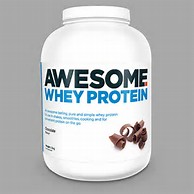
Some years ago, I was invited to write a chapter for a book which was later named, “Whey to go”.
The book, when it appeared in 2014, had 10 contributors. It has become a “case study” on the complexity of new product development. The story that we tell is about the extraction of protein from whey and its sale as a new food ingredient, by the New Zealand Dairy Industry.
To do that we had a new processing technology called ultrafiltration. The technique is to use a membrane that has pores so fine it can concentrate protein molecules in their natural state. Beginning during the 1970’s the technique was applied to whey by colleagues at the New Zealand Dairy Research Institute in Palmerston North. The true protein in whey is about only 0.5% of the whey volume. A saleable protein ingredient for the food industry needs to have 80% protein so the concentration factor is huge, while the membrane is rejecting smaller molecules like milk sugars and minerals.
A potential manufacturer of a suitable membrane was located in the U.S.A. and years of membrane development followed. Eventually, a commercially useable ultrafiltration plant was made and used at a dairy company site in the Waikato.
A potential customer was identified. It was Coca-Cola who aimed to produce a protein fortified acidic drink in Latin America. Their requirements demanded modification of the protein to suit their needs. Technically this was achieved after a lot of “to and fro” sampling. But the whole concept fell apart when the marketing strategies of Coca-Cola shifted.
We were left with a technology and a product without a home. Happily, we learned to modify the protein for other uses and it found a home as an ingredient for a food in Japan. It was far more costly than other dairy proteins yet the application justified the price. Finally, we were to find better ways to use ultrafiltration (and later ion exchange resin technology).
Markets were eventually identified and the business grew to include all the available resources of whey in New Zealand. The entire exercise took 30 years to achieve and will go on for a long time yet.
The lessons for success that we learned are:
- Stay close to your customers,
- Compete with leading-edge technology,
- Create a supportive environment for innovation, and
- Manage branding, intellectual property and know-how.
Today, if some smart person tells you that the dairy industry must produce specialised products; tell them they are 40 years too late.
And, if you hear about “dirty dairying”, reflect for a moment that the dairy processing plants are never an environmental concern. That is a direct spin-off from the success of protein technologies that made whey too valuable to be discarded – as it once was.